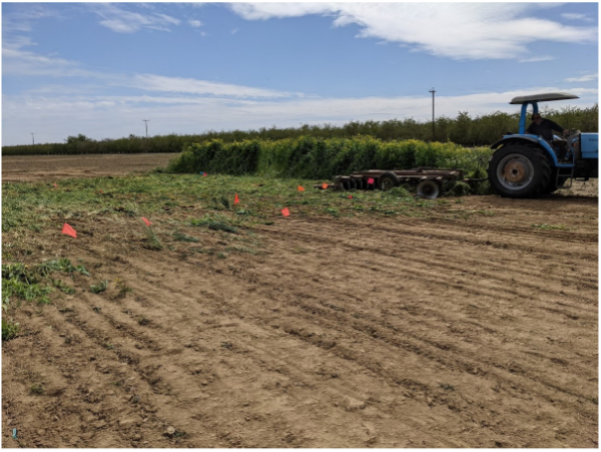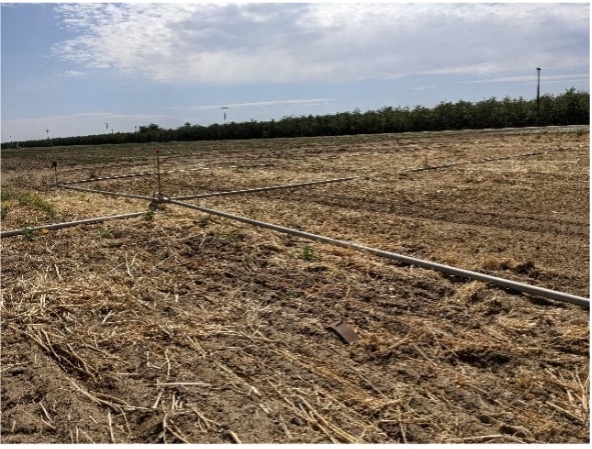Cover crops can provide many soil and ecosystem benefits, like improving water infiltration and providing resources for pollinators. However, we don't yet know which cover crop species are best suited for specific cash crops.
To answer this, I planted potatoes into the residue of 5 cover crop mixes in Shafter (Kern County). Here are the mixes I planted:
1. Soil health mix: Merced rye, common vetch, berseem clover, and daikon radish
2. Soil builder mix: triticale, Dundale peas, common vetch, yellow mustard, and radish
3. Brassica pollinator mix: yellow mustard, daikon radish, Nemfix mustard, “Bracco” white mustard, and canola
4. Simple mix 1: Merced rye and Dundale peas
5. Simple mix 2: barley and common vetch
I wanted to see if the cover crops would reduce disease incidence or improve yield. Here's what I did in this trial:
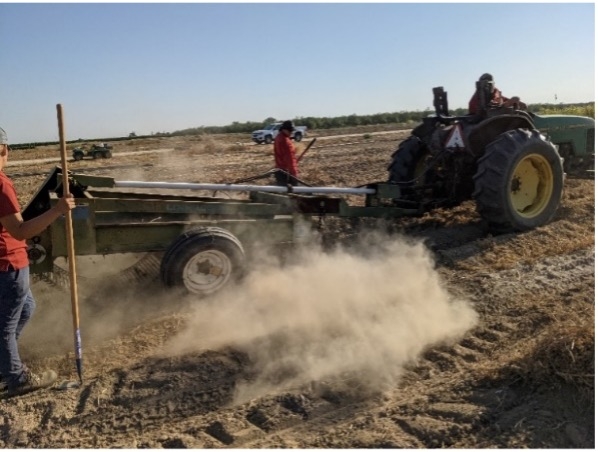 |
Potatoes were harvested on August 3, 2021. |
So, what did we see? We had a few challenges:
Southern blight and other soil borne pathogens
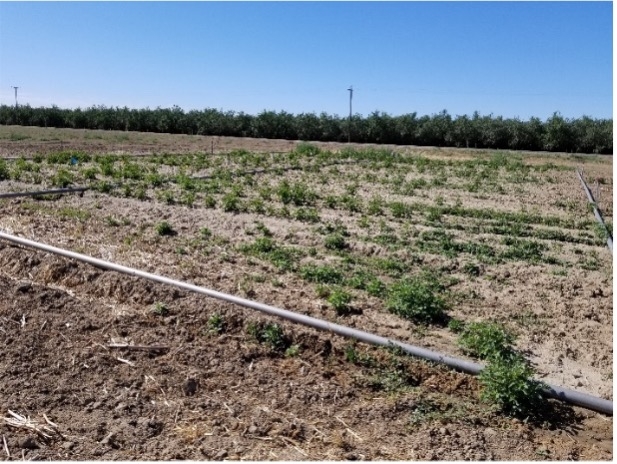 |
By June 9, all of the rows had some potato plants, but it was very patchy. |
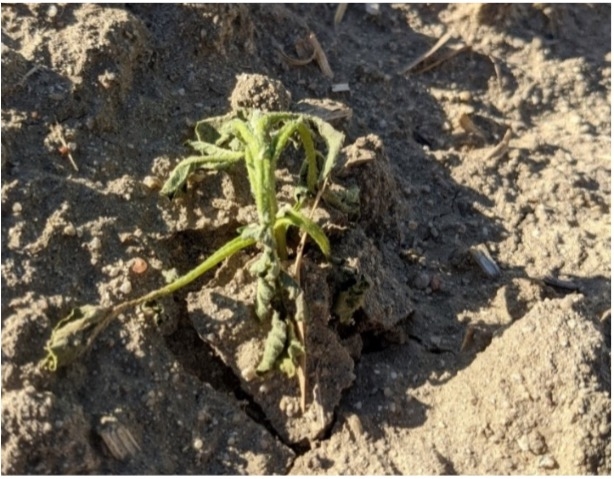 |
The plants were dying because they were infected with southern blight and other soil borne pathogens (right photo). |
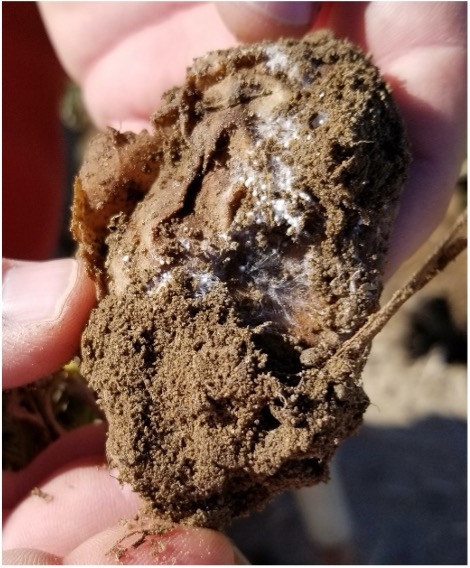 |
Results
So, did we find anything interesting?
There was too much variability and not enough replication to see meaningful differences in the yields associated with the different cover crop mixes.
Further research is needed to identify the best cover crop species for each cash crop in Kern County.
Key takeaways
Southern blight thrives under the conditions of the trial field in Shafter. It has historically only been a major problem in Kern County, but other areas of California are now reporting cases due to warming temperatures.
It grows best under these conditions:
- Warm temperatures
- Acidic soil – the soil pH in the top 6 inches of soil was between 5.8 and 6.3
- Decaying organic matter – in this case, the decomposing cover crops
- High soil moisture – we used sprinkler irrigation
Unfortunately, southern blight doesn't just attack potatoes. It has a wide range of hosts and can decimate other vegetable crops like tomatoes, cucumbers, and chard.
Should I not plant cover crops because of southern blight?
The potato trial in the neighboring field was also decimated by southern blight. That field was fallow before the potatoes were planted, with no cover crops.
If you plan to grow a crop that is susceptible to southern blight and you are in Kern County, you should focus on the cultural practices and chemical products that will reduce your risk of crop loss.
If you plant cover crops, make sure that the crop residue has completely decomposed before planting your cash crop. This might require terminating your cover crops early, so that there is enough time for complete decomposition.
In this trial, there was an incredible amount of biomass left over from the cover crops. They were irrigated and planted at 1.8X the recommended seeding rate. There was also plenty of nitrogen and warm weather to fuel their growth. If your cover crops do not produce as much biomass, especially ligneous biomass, then they should not take as long to break down as the ones in this study did.
More information about southern blight
- https://content.ces.ncsu.edu/southern-blight-of-vegetable-crops
- http://ccvegcrops.ucanr.edu/newsletters/Tomato_Info_Newsletters72607.pdf
For more information about the trial, contact Shulamit Shroder at sashroder@ucanr.edu or 661-903-9442.
Many thanks to Jed Dubose, Jaspreet Sidhu, Jennifer Fernberg, Cristal Hernandez, Brian Marsh, Rick Ramirez, Caddie Bergren, and Samikshya Budhathoki for their help.
